Ever since I heard about Anuradhapura I had this urge to visit this city that I share the name with. Now, I know I have an incredibly common name. I always detest being one of the many Anuradha in any group. However, if there is one reason I like my name for the fact that I share it with one of the oldest living ancient cities in the world. By the way, it also tells me how ancient my name is – for the city was named after a minister named Anuradha.

Anuradhapura – Things To See In The Ancient Capital Of Sri Lanka
On this solo road trip across UNESCO World Heritage sites in Sri Lanka, my journey began at Anuradhapura after spending a couple of days in Colombo. Early morning, I started from Cinnamon Lodge at Habarana to reach Anuradhapura around 7:30 AM. My first glimpse of the sacred city was across a giant lake where I saw lots of birds flying around. Across the lake were two giant stupas – one in pristine white and the other in rustic ancient burnt red bricks. The white one was obviously in practice and impeccably maintained while the red one had its pinnacle broken giving it a character.
My urge to rush to the city grew manifold standing there looking at the Stupas even when birds flying around were trying to keep me there.
In a few minutes, we landed at a parking lot that was surrounded by the remains of an ancient monastery. The moment I stepped foot in the sacred city, I felt connected to those millions of monks who would have walked and prayed here.
Ruwanweli Seya or Ruwanveli Dagaba

The white stupa that I had seen from across the lake was our first stop. After depositing our footwear we took the ancient stone steps to the base of the Dagaba. Nagaraja guard stone stands at the entrance- this is something that I would notice everywhere for the next 2 days. I noticed that most people visiting the Stupa were wearing white clothes. Only the tourist wore other colors. My guide said there is no rule that people should wear white but most people choose to. I assume it is a tradition that people continue to follow.
In Sri Lanka, a Stupa is known as Dagaba.
The white stupa merged with the white clouds surrounding it. From some angles, it speared as if the stupa is descending from the clouds. The outer wall of this stupa is made of elephant heads. This is obviously a new wall but apparently, there was an old wall with elephant sculptures that have been replicated. Parts of the old wall can be seen behind the stupa and some around the stupa. I walked around the stupa, enjoying the devotion in the air with people in white moving around with flowers and incense sticks in hand or sitting facing the stupa in meditation.

Ruwanveli Seya Dagaba is also known as Mahathupa and is one of the most sacred places for Therwada Buddhism. It was built by King Dattha Gamini in the 2nd BCE.

Karthikeyan and Vishnu
There is a life-size statue of the king looking at the stupa both with folded hands and a sense of gratitude. In the four cardinal directions are four arches and enclosures with Buddha images. In a temple close by a large and colorful image of Buddha in Mahaparinirvana state is being worshiped. Interestingly it is flanked by an image of the Hindu Gods Karthikeyan and Vishnu. Something that I would see repeatedly. Old stone images of Buddha have been preserved including an image of the future Buddha – Maitreya. It is said that the pinnacle of this Stupa had a large Ruby in its hay days.

What I found interesting was that with flowers, milk, and food a lot of herbs were being offered at the Ruwanweli Seya Dagaba.
A pictorial depiction shows how the giant stupa was erected. The kind himself is seen contributing his labor to the building of the stupa.
Shri Maha Bodhi Tree, Anuradhapura

My guide said ‘Shri Maha Bodhi’ when I asked if this is the Bodhi Tree. This should tell you how revered this tree is in Sri Lanka. We know that Emperor Ashoka’s daughter Sanghamitra brought this from Bodh Gaya. But what you may not know is that it is the Bonsai version of the tree. The tree looks rather small for its age – which is more than 2200 years. What is interesting is that the current tree at Bodh Gaya is from the sapling of this tree and it is a full-fledged normal tree. My guide emphasized that the art of Bonsai was known then, especially when trees had to be carried to distant places.
Shri Maha Bodhi tree at Anuradhapura is the oldest historically authenticated tree.
Sacred place
Being the most sacred place in Sri Lanka, the Shri Maha Bodhi tree is well protected. It has a wall around it and all you can see is its upper part. I was told that a Botanist visits the tree twice a day to ensure its wellness. The original branch that was brought from India is held up with golden planks. It is like holding it up with all the respect it deserves. A golden railing surrounds the platform on which the Bodhi tree lives. The soil around the Bodhi Tree and the rest of the ancient city is quite sandy, I wonder how the trees grow here.

To enter the premises you pass through carved stone steps with an elaborate moonstone and Nagaraja Guard Stones on either side. Flower sellers sell Lotus flowers in all colors. It is a pleasure to see them open the buds of the Lotus to create a flower-like look.
Mahavihara Library which wears a very colonial look stands close to Maha Bodhi Tree. However, it is not open to visitors.
Loha Prasada

This is an ancient palace situated between the Maha Bodhi Tree and the Ruwanaveli Seya Stupa. What you see now is just a series of stone pillars. It is said that this was the most beautiful palace with a copper roof. The literature says it has more than 1600 pillars and 9 stories. However, the ill-fated palace did not live for more than 15 years when a fire engulfed it.
It is said that 100 monks whose sole duty was to take care of the Bodhi tree lived here. However, it seems the Bodhi tree can take care of itself and does not need an army to protect it.
What you see now looks very simple array of rather plain-looking stone pillars.
Archeological Museum
Archeological Museum is also its ticketing counter. A tour of the museum will introduce you to the in-situ artifacts from various excavations.
Jetvanaramaya Dagaba

Built in the 3rd CE, this is a massive stupa. It was the tallest building of its time after the pyramids of Egypt. At the museum, I saw the before and after restoration images of this stupa.
A small temple (small only compared to a stupa) has the image of Buddha in a Mahaparinirvana state. All the practicing images of Buddha in Sri Lanka are colorful with dominant yellow and red colors. I walked around the stupa and discovered a sculpture of Naga that is still worshiped. Two large stone inscriptions tell the story of the stupa.
The massive brick stupa makes you feel small – it kind of crushes your ego and tells you that you are just a tiny part of the large universe. Know your place.

Opposite the Jetvana Dagaba stands the ruins of an image house. Its central chamber shows a circular pedestal with a square Yantragala where a large Buddha statue would have stood once.
Kuttam Pokuna Anuradhapura
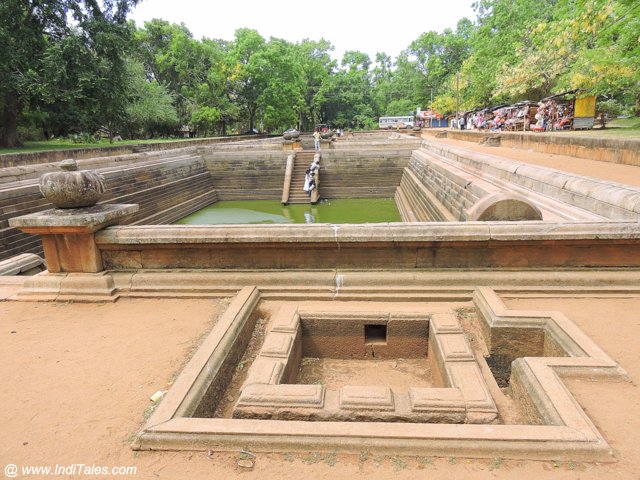
Kuttam Pokuna means twin ponds. It refers to two stone bathing ponds that stand next to each other. The ponds are lovely – a bit like step wells we see in India but much smaller. There is a brilliant Naga sculpture on one of the walls. I can only imagine how it would have been to bathe here. I wondered if one is meant for men and the other for women or maybe one is meant for hot water and another for cold water.
What is interesting is that these ponds are a part of the extensive water management system of the ancient city. If you go around the ponds and walk a bit you would find the water filtering system. The ponds were used to receive filtered water from water channels that supplied water to the city. A series of such tanks, when filled with water, would let the excess water go to the next tank. You see a similar system of water collection and distribution at Kanheri Caves in Mumbai.
At the Colombo National Museum, I read about this and was quite excited to see these ponds and water filters. Unfortunately, they are no longer operational and you see dirty water and water bottles thrown in the ponds.
Samadhi Buddha

Samadhi means a deep state of meditation. A lot of Buddha statues are seen in this state with his hands in Dhyan Mudra or a meditative state.
Now, what makes this particular Buddha statue special is the 3 different expressions it carries from 3 different angles depicting the Peaceful, Smiling, and Compassionate aspects of Buddha.
Abhaygiri Vihara

This is one of the biggest monastic sites in Anuradhapura. The stupa in Brick is similar to Jetvanaramaya. I was surprised to know this vihara has Jain origins although it is best known for being the largest Buddhist monastery that once housed 5000 monks.
The monks of Abhaygiri Vihara were among the first custodians of Tooth Relic when it first landed in Sri Lanka.
When you walk around the Stupa, you see a lovely statue of Buddha with a parasol above it.
Board games are carved on some stone slabs just like you see in many stone temples and cave temples in India.
Thuparama and Miraswati Stupas

These well-maintained stupas in white can be seen surrounded by tall stone pillars. You have to imagine the wooden roofs that would have covered these pillars and the shape these stupas would have been in.
There are many big and small stupas across the city. As a tourist, you can simply get lost in them.
Driving around

As you drive around or walk around or cycle around the sacred city you see the ruins of Vihara – an image house here and some residential quarters there. The brick and stone structures are mostly left with foundations and stone pillars.
It takes a lot of imagination to see it as a living city where thousands of monks lived, studied, chanted, and prayed. However, they do give you the vast expanse of this ancient city.

Moonstones and Guard stones can be seen almost everywhere and look similar binding the city with an invisible thread.
There are many big and small museums. You can visit them with the same ticket however no photography is allowed anywhere. Most of them have excavated sculptures on display and sometimes in the open air. What I found interesting was the ample inscriptions in every museum.
Isurumuniya Rock Temple

Isurumuniya is a rock temple located on the outskirts. Two lovely lotus ponds greet you at the entrance of the temple. Two rocks erupt out of the otherwise plain surroundings. A lovely man-made pond surrounds the rock that in turn is surrounded by the well-manicured gardens.
One rock has a small Buddha temple and on the other one, you have to climb through a series of steps and a small bridge. On top of the rock are the footprints of Buddha. However, it is a beautiful view of the landscape that you get from the top. You see the fields with the backdrop of hills. Close to the rock, you see lotus ponds and gardens.

Isurumuniya is known for its stone sculptures that depict a loving couple and another one of the elephants on the rock next to the pool.
Small girls were trying to put small sticks joining the two rocks standing on each other. It almost made them feel they are providing support to the giant rock. Things we can do only as children.
Mihintale – Where Buddhism took roots in Sri Lanka
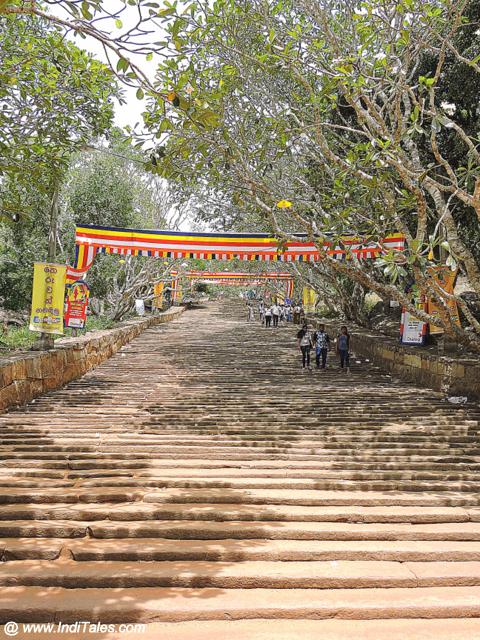
Mihintale is a hill some 11 km away. This is a historic place as this is where Mahinda and Sanghamitra first met the then-king of Sri Lanka in 247 BCE. This was the beginning of Buddhism in the island nation.
To reach the exact spot, you have to climb the steep hill. The hill face has been carved into small steps, so climbing is not difficult. However, I attempted to climb it in the middle of the day and I was exhausted.
On this trip, I landed in Sri Lanka on the same day as Mahinda had landed – a full moon day in June. I saw serendipity in this and climbed the hill. Unless you are a believer in Buddhism, you can avoid it to save some energy for the other sites. However, it is a great place to see the sunset, sunrise, and a bird’s eye view of the sacred city.
The brief history of Anuradhapura

Archaeological records date the city back to 10th BCE. However, the country’s oldest text Mahavamsa states that Anuradhapura was the first capital of Sri Lanka dating back to the 5th BCE. It was planned and built by King Pandukhabaya. It gained prominence in the time of King Devanampiya Tissa in the 3rd BCE – the period that coincides with the advent of Buddhism on the island nation.
King Tissa developed Anuradhapura with inland agriculture through a network of canals and lakes. Some of them continue to be in use to date.
There were many invasions that the city saw. However, it continued to flourish till 11th CE after which the capital moved to Polonnaruwa – whose tale I would soon narrate.
It remained uninhabited for a few centuries though it never went out of memories of the Sinhalese people. It was re-discovered by the British in 19th CE excavations.
Travel Tips

- The Sacred City of Anuradhapura is a UNESCO World Heritage Site. It is free for Sri Lankans, but others have to pay $25 for the entry fee.
- The site is pretty much open for you to explore anytime if you have a ticket except for the museum which opens at designated times.
- Sacred City has no places to stay but you can stay at the new Anuradhapura. I stayed at Habarana which is about an hour’s drive from here.
- You can get small eats and of course tea and King Coconut.
- There are many souvenir shops but I did not find anything unique – most of them sell the usual touristy stuff.
- Cycling is the best way to explore.
- No photography is permitted in the museums but it is allowed in all monuments including inside the temples.
Recommend you read the following travel blog posts.


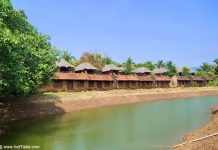

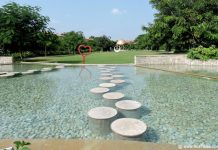

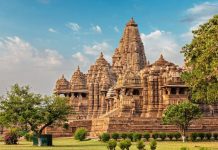

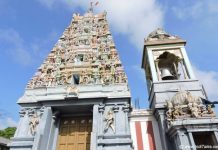





Did not know about this at all. Visited SL and covered few other places in there.
Sushma, I also missed it the first time I visited Sri Lanka. This time visiting Anuradhapura was the prime attraction for the trip. However, O discovered Polonnaruwa which was even better than this city. A post on that coming soon.
Dear mam, I am carried away by your blog. It is exclusively enriched in more about unknown places . I am huge follower of these travel blogs because even I really want to do something relevant to travel .
Thank you, Sakshi. May you travel to your heart’s content.
Very good contents relating Buddhist by Anuradha the lord Ashoka’s daughter. Thanks madam for your collection.
Never knew about this place. Thanks for giving me a glimpse to what you’ve seen. Beautiful.
Glad you discovered a new destination at IndiTales.
First off, the layout of your blog is gorgeous! Really nice work and lots of amazing posts 🙂 My parents just got back from Sri Lanka so I was interested in learning more about it. Your post hits all the bases! Thanks for this resource!
Thank you so much, Jessica. Your words encourage me. Sri Lanka is a gorgeous country to explore.
This is gorgeous.I would love to visit Anuradhapura.Those stupas are breathtaking.How is the weather?
Weather is always hot and humid in Sri Lanka and Anuradhapura. Remember you are very close to the equator. Go out early and stay indoors during the noon time is what I would suggest.
बहुत सुंदर फोटो ब्लॉग !
धन्यवाद हर्ष जी – आप हमारा हिंदी ब्लॉग भी देखिएगा – https://www.inditales.com/hindi
Wow! A city named after you 🙂 🙂 .. The place , without doubt, is a worth spending a complete day. I suppose in those time it was normal of have deities of Hinduism along with Budhism. I have seen Brahma in some Buddhist temples i Thailand and Malaysia too.
Nisha – the city is more than 2000-year-old, so I probably got its name. The city was intriguing to me because I shared my name with it. When I reached there – I found there is so much more to this city. Till a few centuries back, no one thought of Buddhism & Jainism as separate religions. I still believe, they are two of the many paths of Hinduism.
So many World Heritage sites on such a small island. I would love to visit them all. I love how Ruwanveli Dagaba almost blends into the clouds because it is so white. How long did you spend at each temple?
Yes, Jennifer and each site is a gem. I could spend one full day in Anuradhapura. Most of these temples are located in the close vicinity and if you on a normal day, you can easily do the whole city in a day. I spent more time at the Bog stupas and the Bodhi Tree.
The first picture is stunning. Those structures are massive. I like the renovated and non-renovated difference of the stupas.